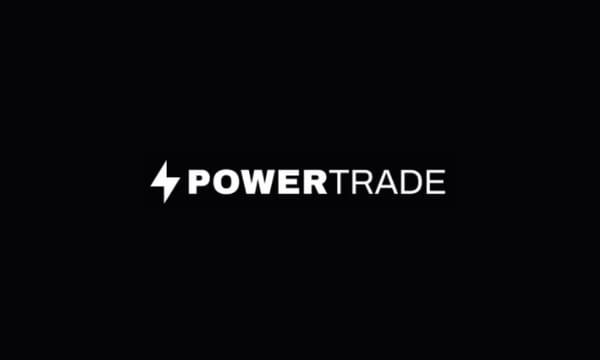Examples of Early DAO Projects and Learnings From Them
Decentralized autonomous organizations (DAOs) have become an increasingly popular way to coordinate and govern blockchain projects and communities. As one of the earliest and most groundbreaking applications of blockchain technology, early DAOs provided valuable insights and lessons for the development of subsequent DAO frameworks. Examining some of the first real-world DAO implementations can illuminate both their possibilities and pitfalls.
The Genesis of DAOs
The concept of a DAO emerged alongside the creation of Ethereum in 2014. Ethereum's smart contract functionality enabled the development of decentralized organizations that could automate governance and operations through code. While the potentials of this model were apparent early on, putting such organizational structures into practice involved overcoming a variety of technical and social challenges.
Early DAO Projects
The DAO
The earliest example of a DAO was The DAO, developed on the Ethereum blockchain in 2016. It functioned as an investor-directed venture capital fund, allowing participants to vote on which Ethereum projects would receive funding support. The DAO raised over $150 million USD in ETH during its creation phase, making it the largest crowdfunding campaign at the time. However, flaws in The DAO's code enabled a hacker to steal around $70 million USD in ETH from the fund, leading to its collapse. This highlighted the dangers of vulnerabilities in smart contract programming.
MakerDAO
Another early DAO pioneer was MakerDAO, created in 2015. It issued DAI, a decentralized stablecoin whose value is pegged to the US dollar. Using collateralized lending via smart contracts, DAI maintains its 1:1 USD soft peg through automated market dynamics. MakerDAO token holders can vote on risk parameters and other governance matters related to managing the DAI stablecoin. It demonstrated the potential for DAOs to support complex financial functions.
AragonDAO
AragonDAO governs the Aragon platform for creating decentralized organizations using Ethereum. Launched in 2016, Aragon allows anyone to establish a modular DAO and participate in its activities and governance through tokens. Control over the parameters of Aragon DAOs is distributed among token holders. Aragon itself is governed by ANT token holders, who can make proposals and vote on issues related to the overall development of the Aragon Network.
"Looking back at these early DAOs, it's incredible to see how much experimentation was going on as people explored different models for decentralized governance and collaboration. Of course, there were plenty of hard lessons along the way. But each attempt brought new insights into how to balance automation through code with the need for engaged human coordination and oversight."
Benefits and Drawbacks
- Benefits
- Accessibility - Anyone can participate and propose ideas
- Transparency - Activities are recorded on the blockchain
- Stakeholder power - Control is distributed to token holders
- Drawbacks
- Technical issues - Code vulnerabilities and failures
- Misaligned incentives - Participants may act in self-interest
- Difficult to reverse course - Immutable smart contracts
This initial wave of DAOs highlighted the enormous potential of decentralized governance structures as well as the pitfalls that can derail them. Overcoming these challenges called for maturing technical capabilities alongside social coordination and aligned incentives. Subsequent DAO development has built on these early learnings.
How Can DAOs Balance Automation With Human Wisdom?
Effective DAO governance requires optimizing the interplay between automated, codified processes and human analysis and decision making. This balance is key to leveraging the strengths of technological automation alongside human judgment. Here are some ways DAOs can achieve this:
- Use smart contracts to automate mechanical and administrative tasks, freeing participants to focus on high-level governance issues.
- Build in signaling mechanisms like prediction markets so stakeholders can surface insights and perspectives to inform proposals.
- Establish processes for seasoned experts to provide guidance and oversight to ensure decisions align with organizational values and goals.
- Structure voting and delegation mechanisms to weigh input from engaged, long-term token holders more heavily than passive participants.
- Enable token holders to override or amend smart contract parameters through governance proposals and on-chain voting as needed.
- Cultivate an organizational culture that attracts participants who share collective values and are invested in the DAO's long-term success.
- Facilitate productive community dialogue and transparent information sharing to build shared understanding and trust.
By intelligently leveraging both coded and human processes, DAOs can harness the wisdom of both smart contracts and engaged participants. This evolution is key to realizing the paradigm-shifting potential of decentralized organizations.
How Can DAOs Balance Transparency With Privacy?
As transparent, blockchain-based organizations, DAOs need to strike a careful balance between openness and privacy. Some strategies to achieve this include:
- Anonymous proposal and voting mechanisms to separate ideas from identities.
- Use zero-knowledge proofs and encrypted data to ensure privacy-sensitive information isn't exposed on-chain.
- Establish private spaces for sensitive discussions alongside public discourse.
- Develop norms around highlighting general conflicts of interest without demanding full disclosure of personal details.
- Focus governance decisions on ideas rather than personalities by structuring proposals and debates accordingly.
- Limit data collection from participants and be transparent about how it is used. Allow pseudonymous participation where possible.
- Provide transparency into organizational spending and operations while anonymizing individual compensation details.
- Build reputational systems based on merit, contributions, and conduct rather than personal histories.
With thoughtful design choices, DAOs can deliver the benefits of transparency while mitigating the risks of unnecessary exposure. By empowering people to engage in governance without overexposing themselves, DAOs can foster inclusive participation.
Conclusion
Early DAO prototypes encountered a variety of challenges but also demonstrated the vast potential of decentralized organizational structures. By learning from these examples, today's DAOs can strike an effective balance between automation through code and human coordination. With these lessons in mind, DAOs are poised to enable new forms of open, transparent collaboration at scale.
Check our guide of the most promising crypto




